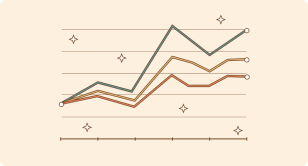The Trump Slump
The S&P 500 is down 10% from its post-Trump election peak, which it reached just three weeks ago. It has now fallen back to July 2024 levels.Updated on 28 April 2025

Meanwhile, Europe’s long-standing peace dividend—enjoyed since World War II—is under threat. With the US scaling back its support, Europe is planning for a major increase in defense spending. Combined with Germany’s new infrastructure investment plans, this has triggered an almost unprecedented 0.5% jump in European interest rates and a surge in the Euro’s value.



